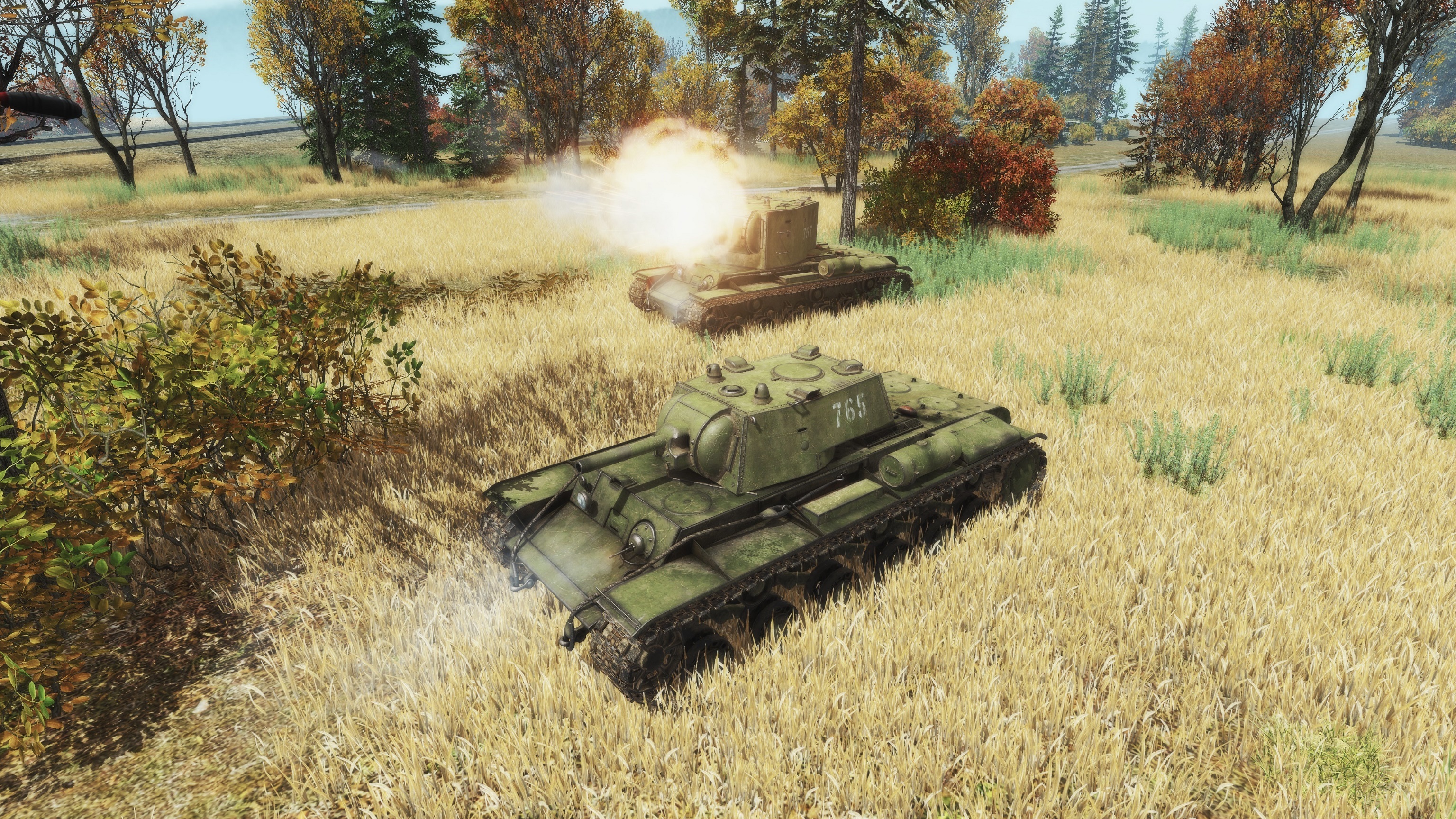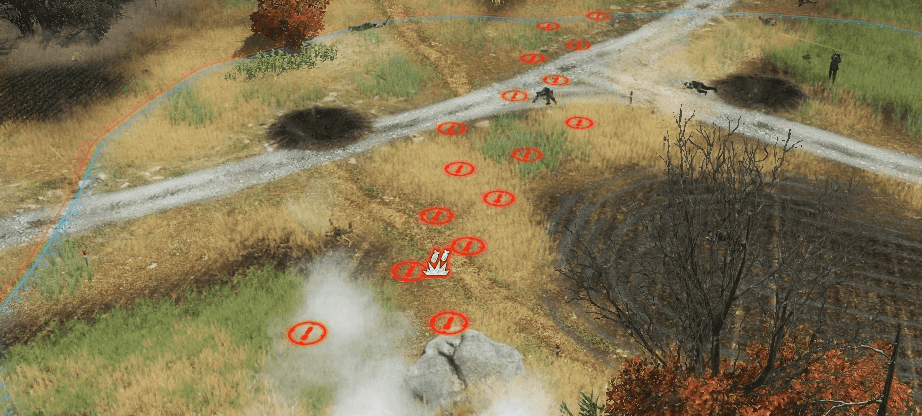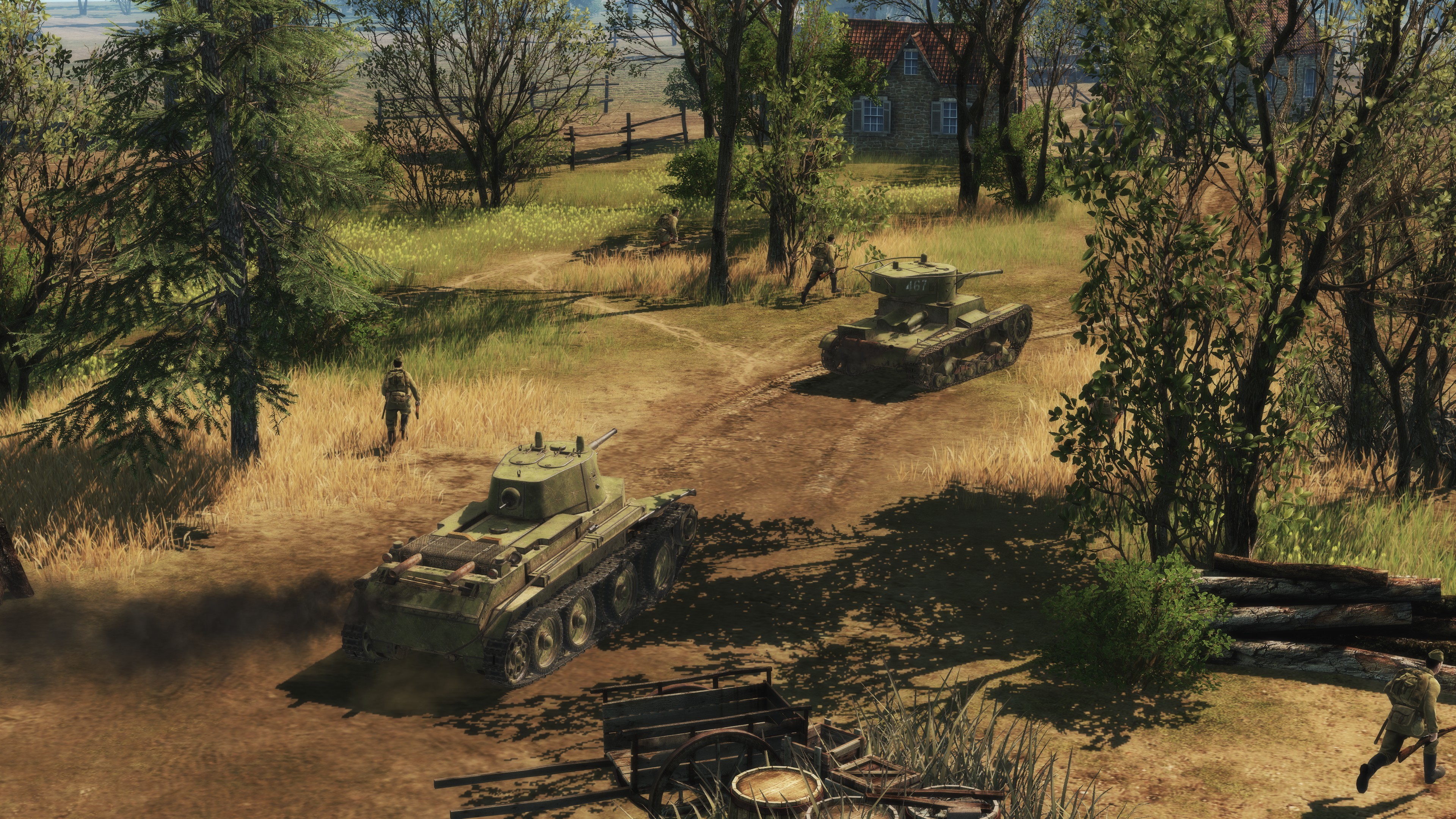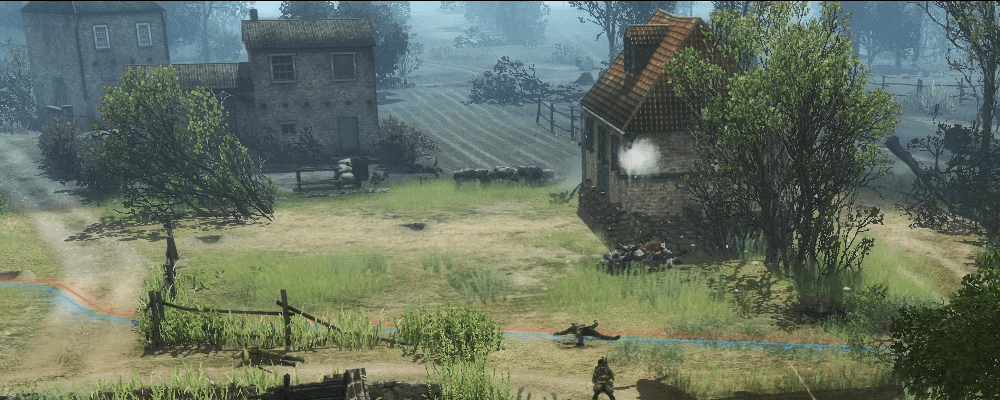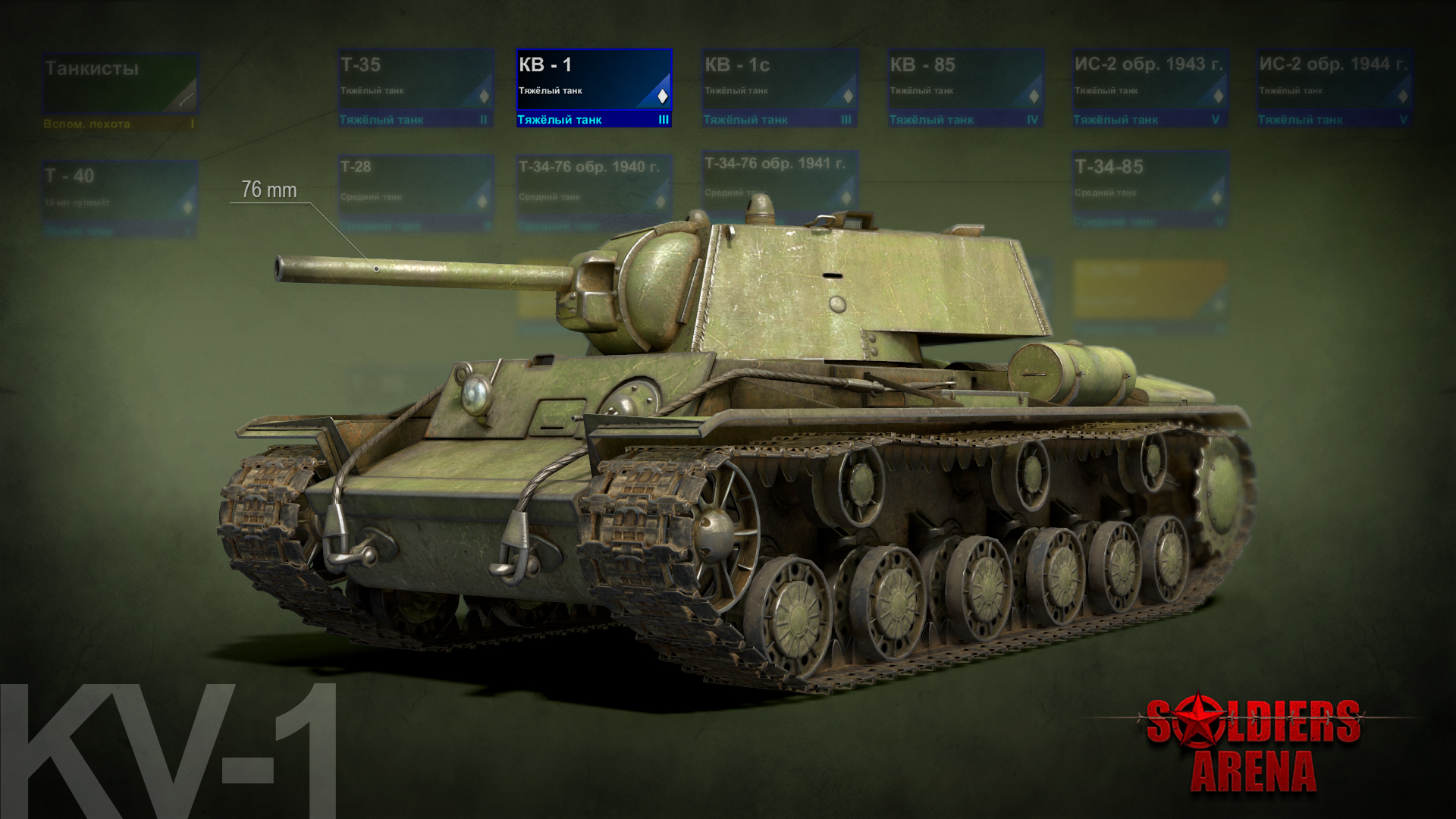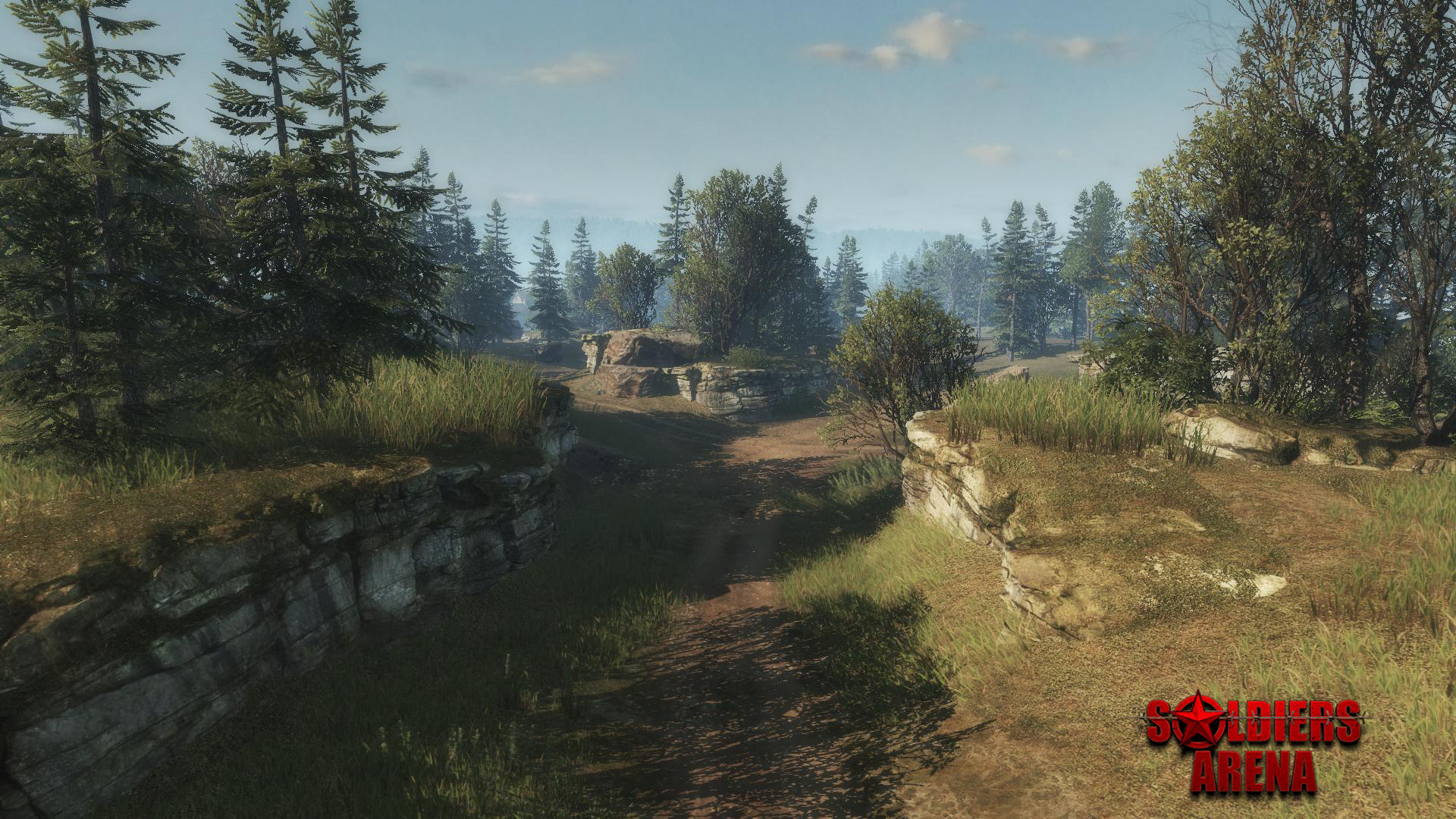DevDiaries #85: Managing battalion p.2
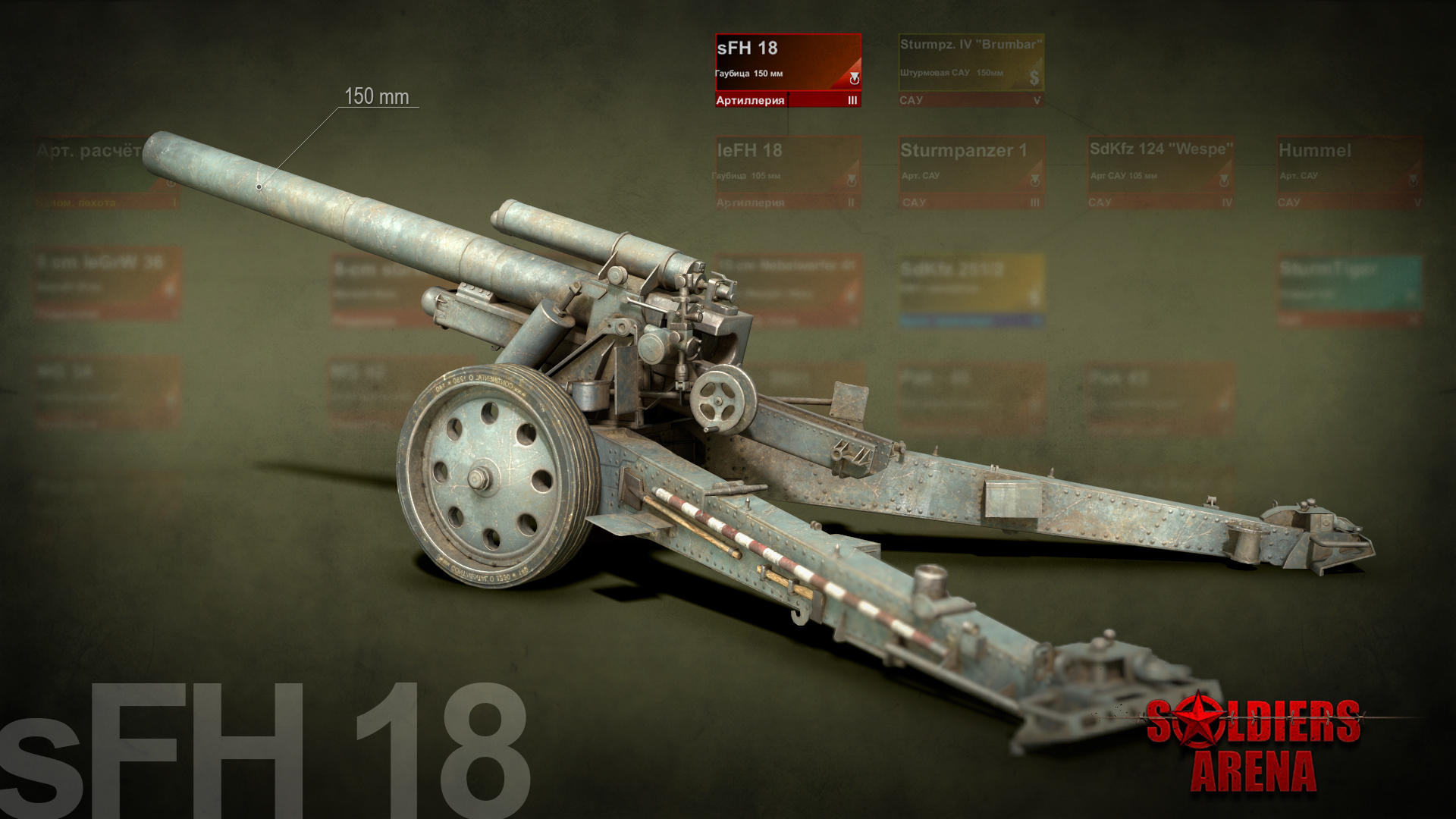 Link
LinkHi, friends.
Today we continue to talk about how to manage your battalion. We’ll show with examples how much freedom of choice the battalion constructor provides. We will conduct an inspection of the howitzer battalion of Germany and will choose a favorite type of sabotage activity along with some other ones. And we will announce the winners of the contest from the last diary who will get access to the alpha test.
In the last diary about on this topic, we talked about the process itself, the principles that formed the basis for the concept of battalions, echelons, and BR. We will not repeat ourselves, so if you managed to forget (or missed the material at all), then here is the link. Today we will develop further on the topic, and show how the same battalion can vary depending on the strategy chosen by the player. In order not to confuse you, we will use the word “battalion”, although both “regiment” and “brigade” can be found in the screenshots. And don’t forget that the interface is still “work in progress”. Do not be too harsh on that.
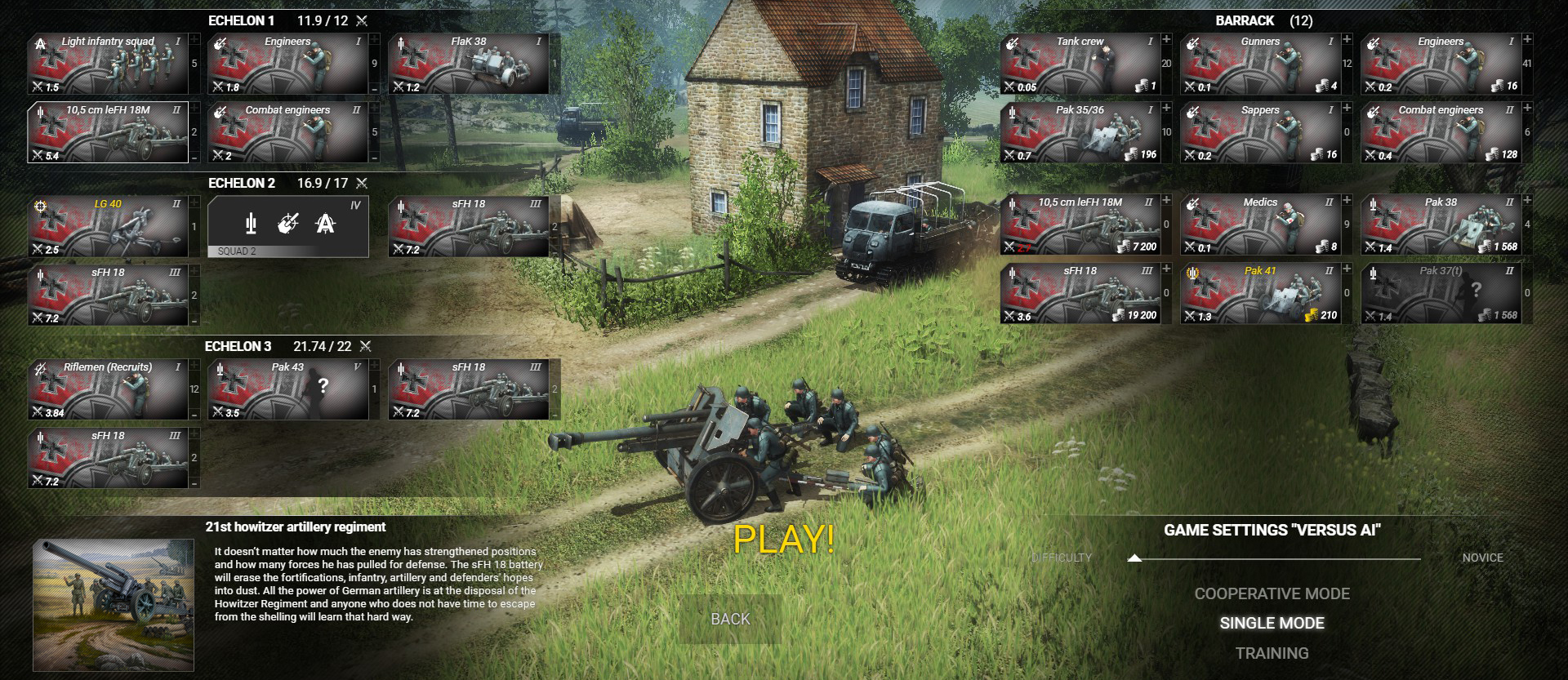 Link
LinkEach battalion has a specialization and discounts on BR for the units. And the deck from the screenshot above uses its specialization to the fullest extent. Only the howitzer battalion can take the leFH 18M on the first echelon, and it is the only one who can put howitzers into two slots on the second and third ones. Using all the slots and a ten percent discount to the maximum (3.6 BR instead of 4 for each sFH 18) we get ten (!) howitzers for the whole battle. We’ll put the recoilless 105-mm LG-40 gun (which we will use as a howitzer anyway), an anti-aircraft gun and some infantry into the remaining slots. At the third echelon we’ll take one Pak 43 in order to at least slightly cover our “rear” from heavy tanks. Such a deck will allow you to field anywhere from 2 to 5 howitzers on the battlefield at any time, allowing you to worry less about their loss and enable you to maintain a generous howitzer symphonic orchestra running. The main disadvantage of it is that there is practically nothing left to defend your chaps with and thus it is necessary to rely heavily on fellow mates.
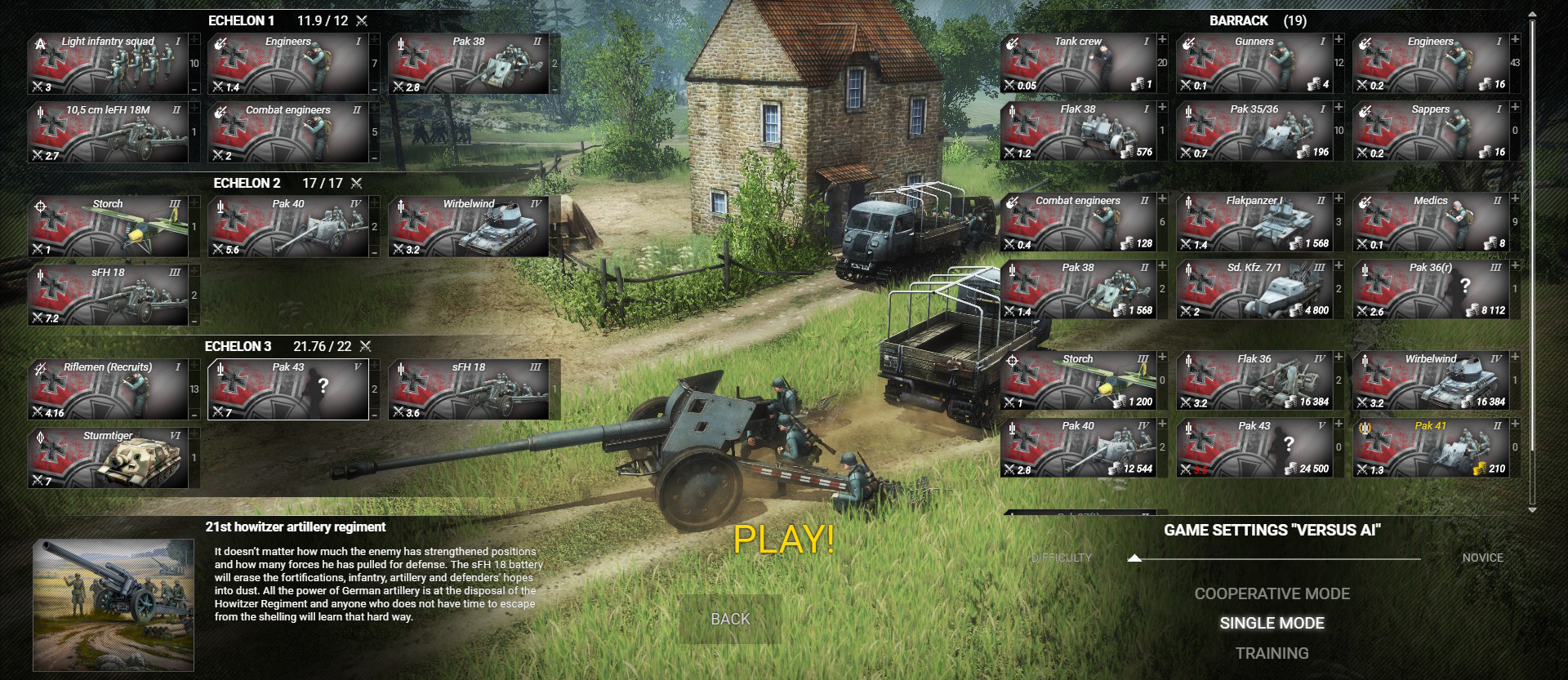 Link
LinkIf you are not yet ready to entrust your life to an ally and think that the flexibility is the best way out, look at the screenshot above. There are much fewer howitzers, so losing them will be very unpleasant, but you will be ready to turn the tables around on unprecedented situations. You’ll be able to strengthen your position with engineers and battle engineers; defend against air strikes and paratroopers with the Wirbelwind. Take some infantry too for cover from saboteurs and the occasional capture of territory, previously freed from the enemy by means of dropping ample amounts of high explosive shells beforehand. Pak of various modifications will not only protect against tanks, but also significantly expand the list of priority targets for you. In general, the battle with this deck is more comfortable, but artillery fire from one or two howitzers isn’t the same as from four.
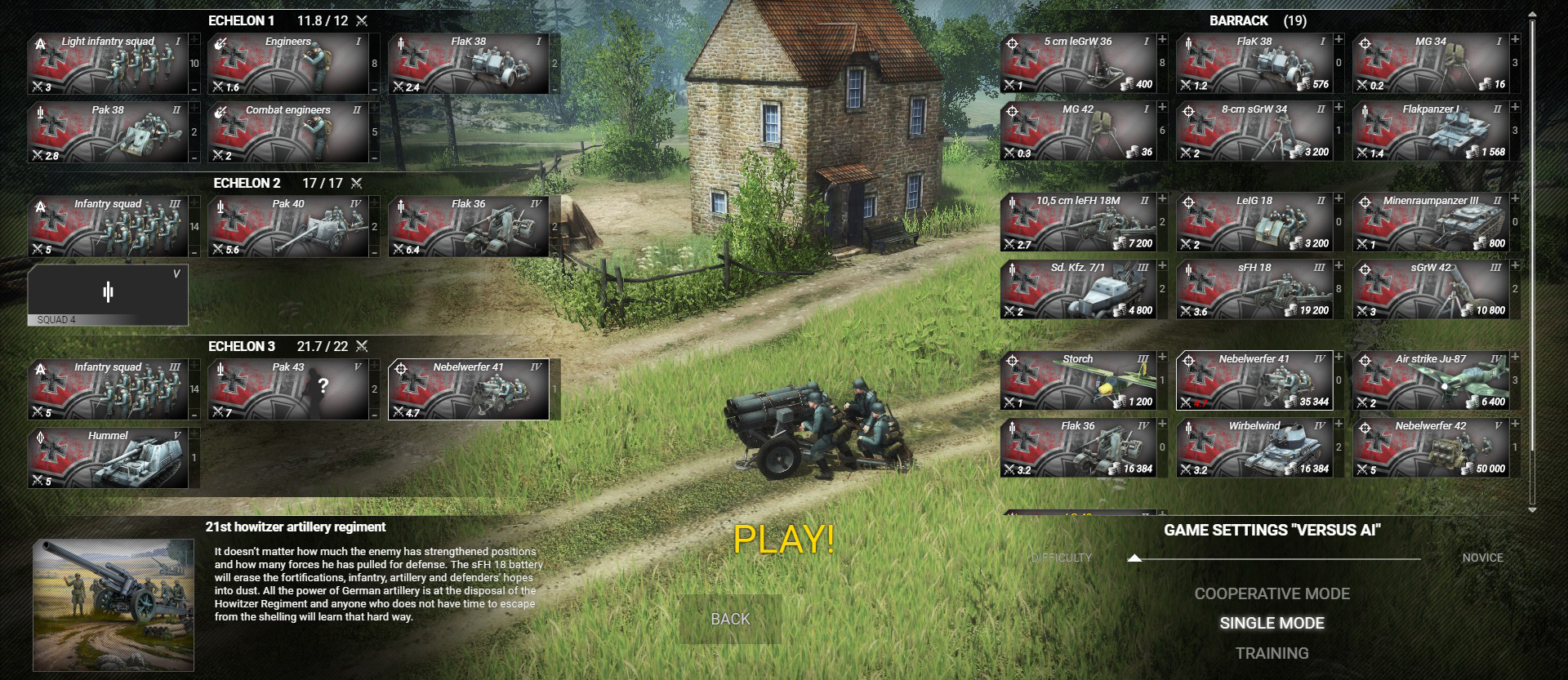 Link
LinkWhat you see above is a deck made by a non-conformist howitzer commander that fights the system in all of its manifestations. This is not to say that a howitzer battalion without howitzers is the right decision, but it is also possible. Just imagine the bewilderment of the enemy team! Your team’s surprise equally notwithstanding, you may be able to pull it off... If you want, you can even play as an attacking howitzer battalion, no matter how strange it sounds. Collect more infantry, clear the territory with artillery preparation, move forward, repeat. Or you can support allies with "fire and wheels" moving after the advancing troops. You can take risks and bring howitzers almost to the front line to level out the minuses of the plunging fire. We are sure you understood the main idea - there is no one true option.
Now let's expand the material looking into the subversive and reconnaissance battalion. Because everyone knows - there is no MoW without a good fight in the enemy’s rear. Let's consider three types of decks: with focus on snipers, on front support and on sabotage units.
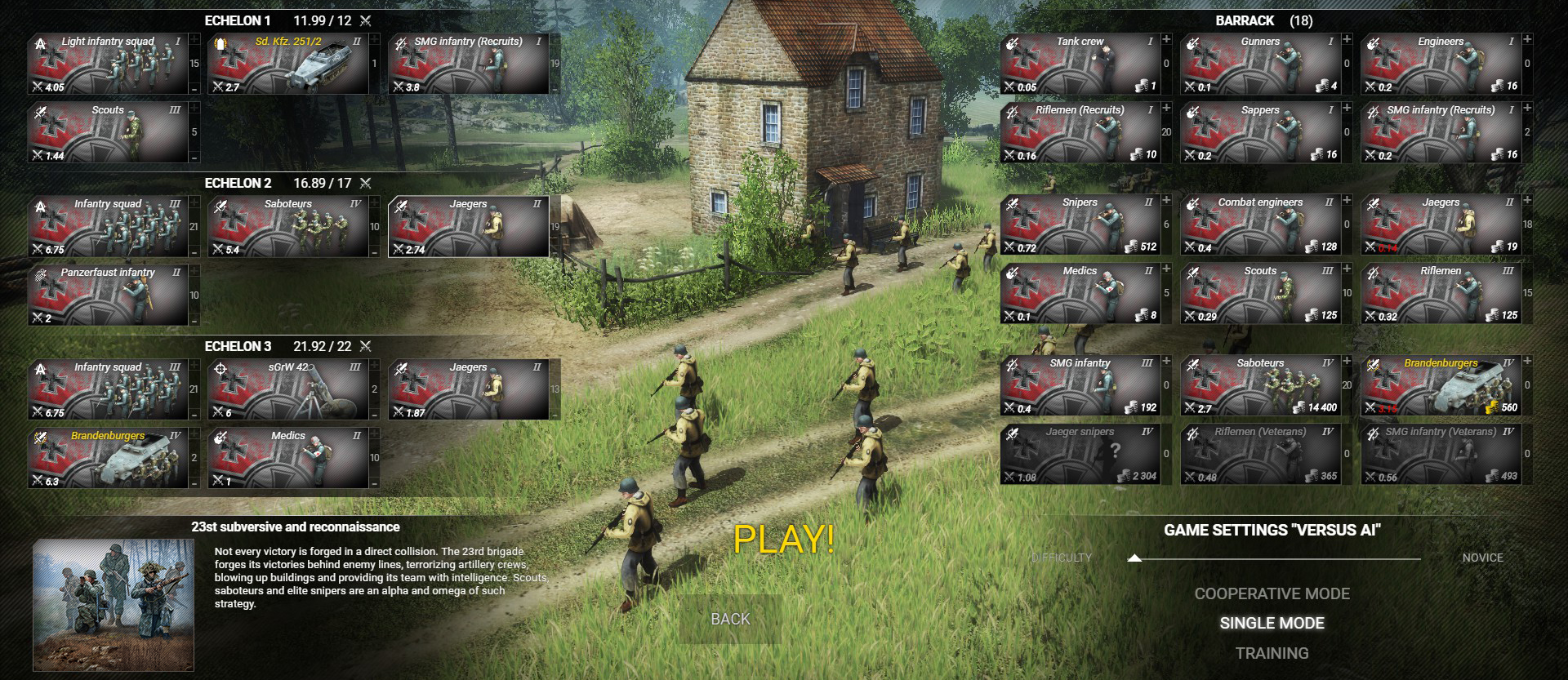 Link
LinkFor successful sabotage behind enemy lines, you still need to go there and find the enemy there, which is actually not so easy. But you don’t have to, when you focus on supporting the frontline instead. Such a deck is balanced and for it, the team will say “Thank you!”, Especially if you are a beginner saboteur. Its goal is to strengthen allies on the front line with your units, whilst then capturing and holding territory. Separate infantry squads will help to hold or capture important areas while you are micro-managing the rest of the units. The Jägers do not capture the territory, but they can protect you from the advancing infantry, and have an improved view range to detect enemy saboteurs. Profile units (scouts and saboteurs) in such a deck should be near the front line. Intentionally not going behind enemy lines, but highlighting firing points, machine gunners and snipers for allied artillery. Just to prevent an attack and repel the desire to carry it out. Mortars, both stationary and mounted on the Sd.Kfz 251/2, will help in cleaning buildings, destroying artillery and defending infantry. This one is good for reconnaissance, defense, sabotage on the front line.
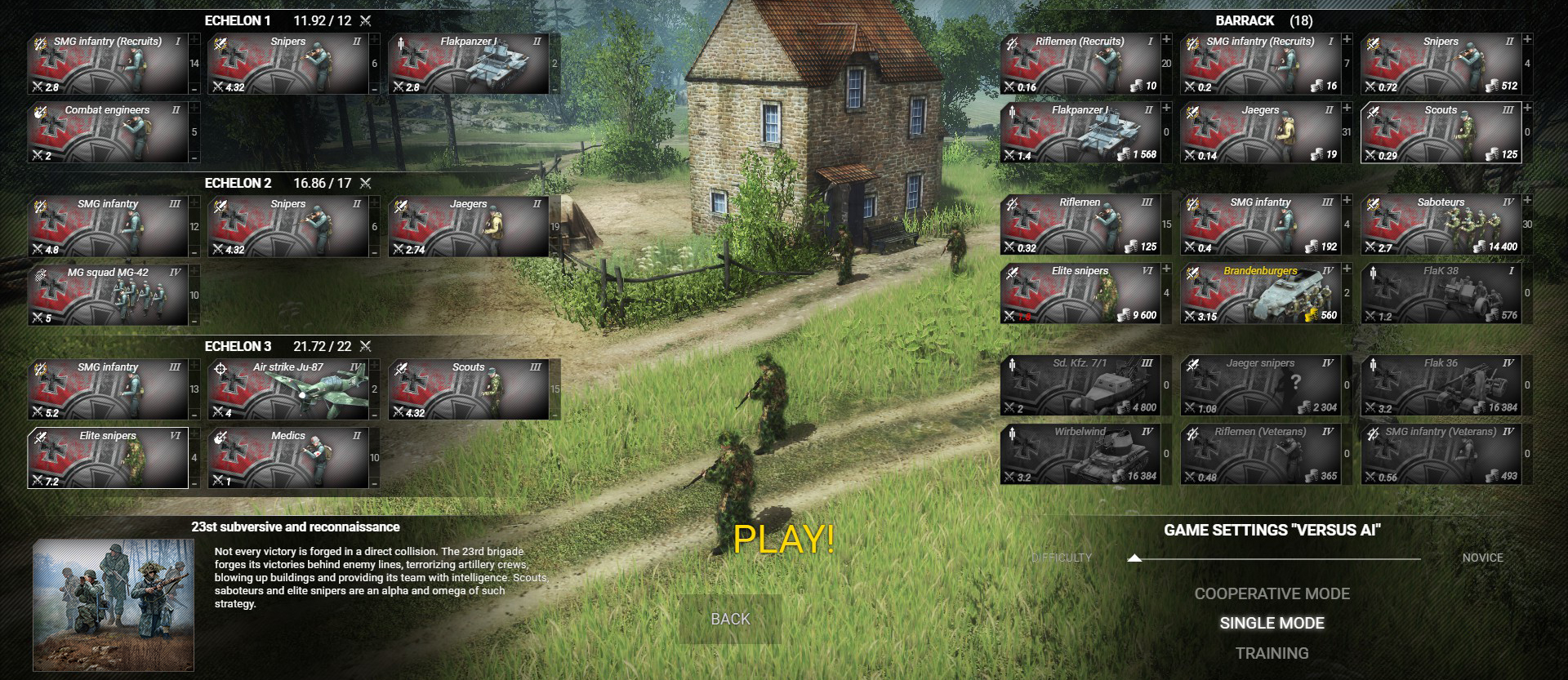 Link
LinkFocusing on snipers speaks for itself. There are a lot of them. If you forgot, here you can read about the types and ammunition of snipers in Soldiers: Arena. Still, all of them have something in common. Any sniper is good for the systematic killing of defending infantry, but does not cope well with large clusters of attacking ones, especially with tank support. They can trample your snipers and roll them over with their tracks. And in order to provide ourselves with some protection against such attacks, we put machine-gun detachments in the remaining slots to protect against infantry and include ourselves an airstrike against tanks and artillery. And we hope that we won’t have to defend ourselves alone. Jägers located close to the front line due to their enhanced view settings provide excellent visibility and highlight targets for snipers. This means that you will always see the enemy first. Such a deck is good for bleeding the enemy and slowing his advance. If the player not only scatters snipers on the map, but also has good situational awareness, then the effectiveness of the battalion will increase significantly. Change positions, monitor the visibility, choose priority targets, advance along with an ally ... In good hands, snipers clean out enemy infantry even better than howitzers.
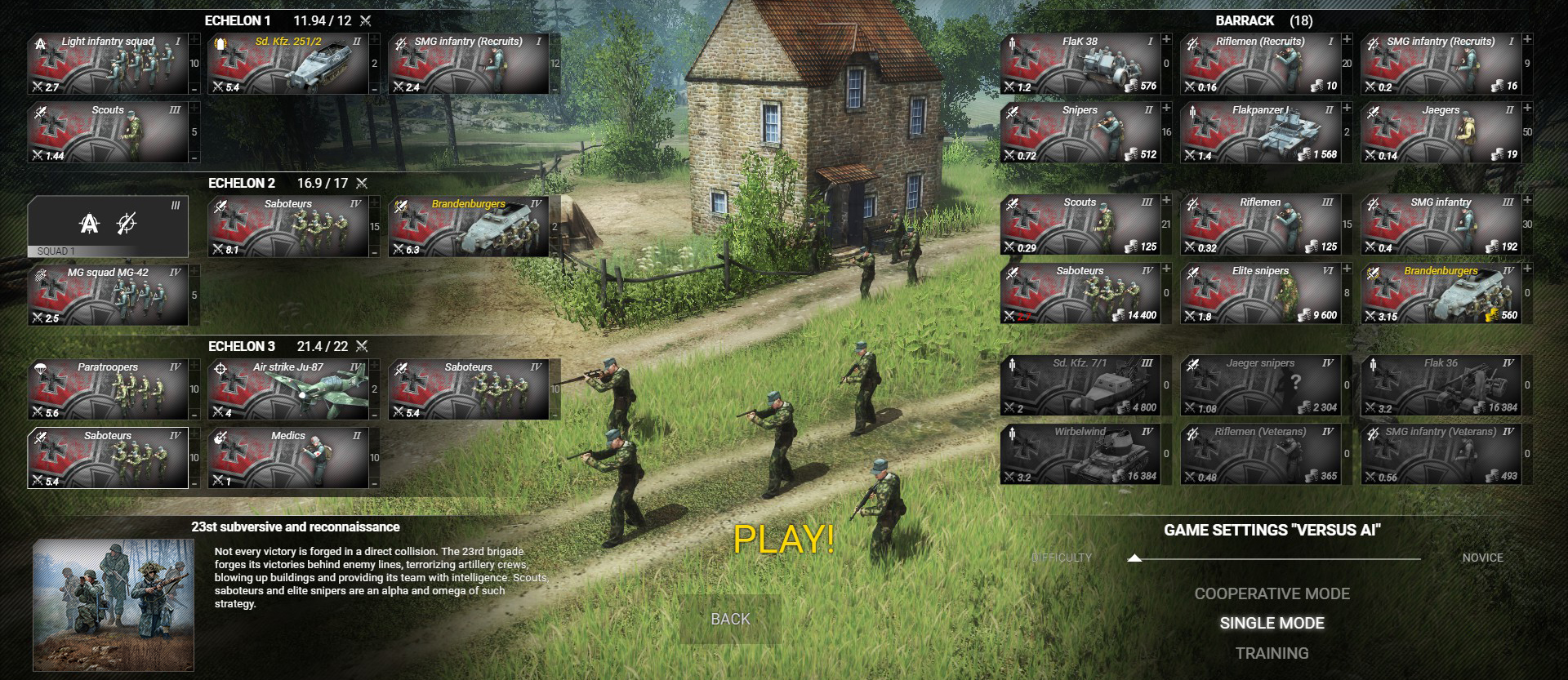 Link
LinkFrom defensive capturing decks, we move on to something completely different. A base-harassing, offensive, aggressive profile. Its basis is made up of scouts, saboteurs and Brandenburgers. All these units have stealth skills, can mask their positions, and do not affect the front line, but their weapons and equipment are very different.
- Scouts. Each of them have MP-40, 2 M39 grenades, a signal grenade (artillery strike).
- Saboteurs:
- Two saboteurs (silent pistol, 2 M39 grenades, 2 smoke, 2 signal grenades, 2 dynamites).
- Saboteur with SMG (MP-40, 2 M39 grenades, 2 smoke, 2 signal grenades, 2 dynamites).
- Saboteur-sniper (Mauzer 98k (sniper), 2 smoke grenades).
- Two saboteurs (silent pistol, 2 M39 grenades, 2 smoke, 2 signal grenades, 2 dynamites).
- Brandenburgers:
- Armored personnel carrier Sdkfz 251 (2 Mg-34)
- Driver (MP-40)
- Two riflemen (G43, 3 M24 grenades, 2 smoke grenades, 2 dynamite)
- Commander (G43, 3 M24 grenades, high-explosive M24x5, 2 smoke, 2 signal grenades)
- Radio operator (silent gun, 3 M24 grenades, 2 smoke, 5 signal grenades)
- SMG infantryman (MP-35, 3 M24 grenades, HE M24x5, 2 smoke grenades, 2 dynamites)
- Sniper (Mauser 98k (sniper), smoke grenade)
- Armored personnel carrier Sdkfz 251 (2 Mg-34)
Such a deck will be supplemented by airstrikes and paratroopers, with which you can kill what your scouts and saboteurs spot. This one is very demanding in micro-control and practically useless in terms of capturing the territory, but if you are used to it, the enemy will never use the words “safe” and “rear” in one sentence.
As you can see, even highly specialized battalions like howitzer and subversive and reconnaissance can be configured for completely different strategies. What can we say about the battalions, the whole point of which is universality?
We want to thank the history fans from the community who responded and sent their work to the contest. There was really a lot of feedback and some of it was really impressive. Thank you for that! It was a tough decision to make but the winners are: Sebastian Czarnowski, Adams Disturber and Zhuk Ruslan. Remember to check your mail, guys. Wish you all the best.
